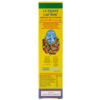If you enjoy high-quality delicacies from the Middle East, then chances are, you’ve tried Feuilles de Brick before – although you might not know it! Many people treat this delicate, crispy pastry in the same way as filo – but its origins and traditional uses are in fact vastly different. A simple set of ingredients comprise this versatile pastry – just wheat flour, warm water and salt. And since there’s no butter in sight, it’s completely vegan, too.
History of Feuilles de Brick
We need to go back over 500 years to discover the origins of this versatile Tunisian kitchen staple, pronounced “breek” and pervasive in countries across North Africa. It’s widely thought that the name actually hails from Persia, and more specifically, a type of stuffed, usually savoury pastry dish, known as börek.
Today, you can find Feuilles de Brick in a variety of delicious, predominantly savoury dishes – although it makes an appearance on dessert menus, too. And while Feuilles de Brick is popular in the kitchens of North Africa, you’ll also find it in abundance on the shelves of French supermarkets today.


How is Feuilles de Brick enjoyed nowadays?
You’ll find it paired with meats such as lamb, and with beans, vegetables or cheeses, particularly in Morrocan-style pastillas. It can also be used as an alternative ingredient in samosas and spring rolls. One of the more traditional ways it’s served is known as the ‘Brick à l’oeuf’. This is a simple, rustic dish – an egg is placed inside a sheet of Brick, before frying it. Take care to use a high heat, and fry for a short amount of time so that the egg retains some gooeyness – perfect to bite into, but beware of it dribbling down your chin!
Most other fillings will require some pre-cooking, which allows the Middle Eastern flavours to be absorbed. When it comes to flavours, the world is your oyster – and yes, seafood can work, too! Of course, to remain faithful to its North African heritage, you might want to consider using spicy harissa, but really, one of the joys of cooking with Feuilles de Brick is the flexibility and creativity it allows. Choose and experiment with your favourite herbs and spices, and allow your tastebuds to guide you.
Don’t worry if you’re not in a savoury mood, either. Feuilles de Brick can also be used to create delectable desserts. Fruit works well, especially combinations such as pear and chocolate. Consider that all-time classic, apple and cinnamon, or even apple and praline or caramel, to bring some echoes of a tarte Tatin. Nuts and seeds can be added too, yielding an interesting extra textural element. Across the Middle East, pistachios and walnuts are popular additions, and work well alongside sweet fruits such as prunes or dates.
Create a parcel for your tastebuds
Once you’ve chosen what flavours to combine, it’s time to release the Feuilles de Brick! Find them at BonneBouffe in flat, round sheets or alternatively, buy them in a roll. Make your selection, and then simply use the Feuilles de Brick like a delicious wrapping paper. Spoon the filling inside to create a pocket, a parcel or even a cigar-shaped roll – perfect to serve as an appetizer. Then, bake or shallow-fry, to seal in the flavours for a delectable, charming snack or quick, tasty meal. Baking creates a firmer, dry finish, while shallow-frying will result in a crispier texture that has a little more ‘bite’.

Can’t I just use filo pastry?
Sometimes, we’re asked if Feuilles de Brick can be substituted with the more commonplace filo pastry. And, while filo might work in some of these dishes, it will not be without compromise. Brick is much crispier and less delicate than filo, and actually delivers flavours to the dish – unlike filo, which functions more as a vehicle for the fillings within. Brick both absorbs and develops those distinctive Middle Eastern flavours, without losing any of its texture.
What’s more, it’s malleable and much easier to work with; in fact, there’s something enticingly tactile about it. It feels like delicate lace, with a silky gloss – but it won’t disintegrate or crumble from the pressure of fingertips. Add to this its unrivalled versatility, and you’ll see why Feuilles de Brick deserves a place on your shopping list when buying French food online.










 Please fill the form below for one of our team to contact you
Please fill the form below for one of our team to contact you